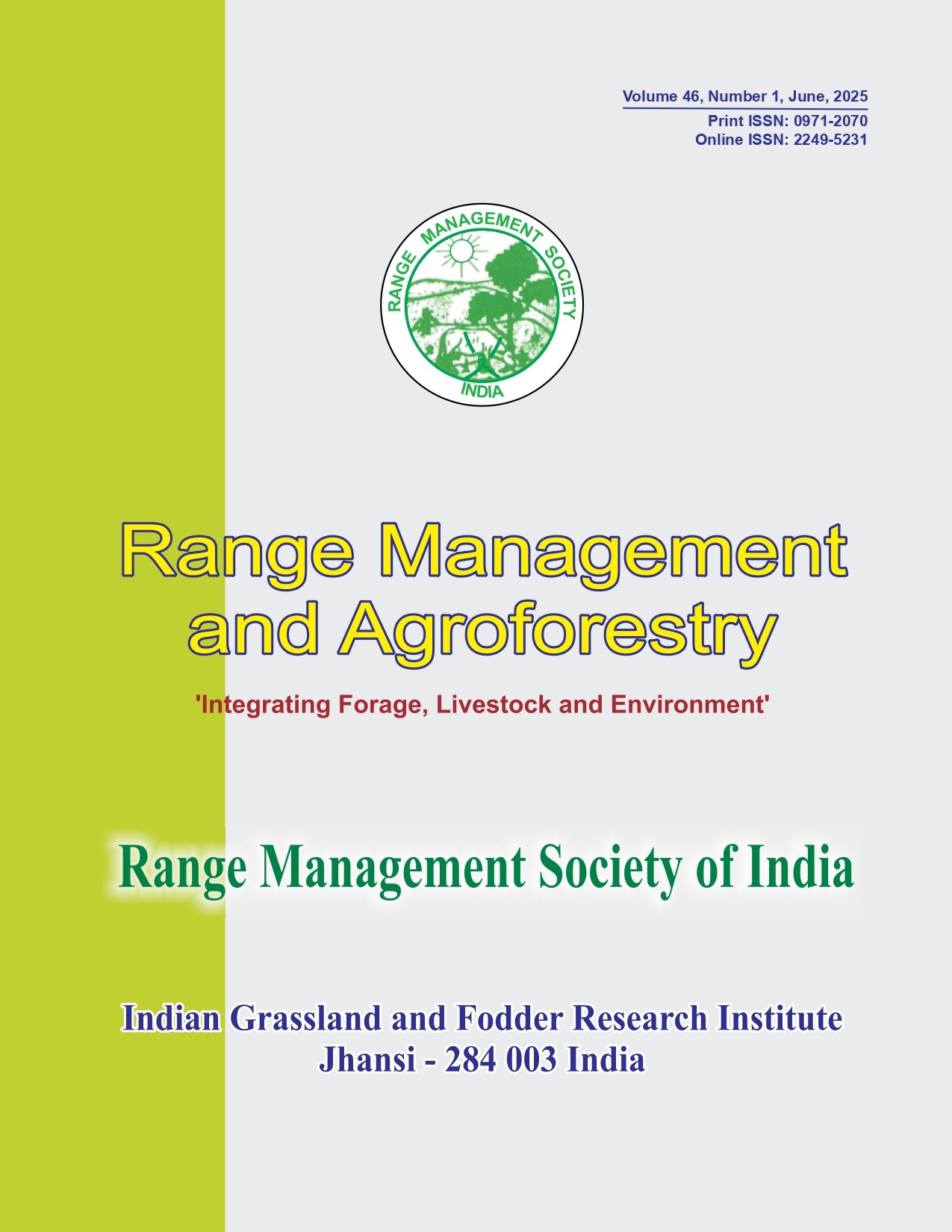Derris trifoliata Lour: a legume fodder shrub for the coastal regions of India
Keywords:
Derris trifoliata, Fodder, Lenticels, Nutritive value, Rotenone, SalinityAbstract
Derris trifoliata is a climbing leguminous shrub distributed in coastal India as a mangrove associate. It can grow in mudflats and survive in soils with different grades of salinity. Its morpho-physiological characteristics of leaf and stem confirmed features of salinity tolerance. Lenticels in the stem are likely an adaptation to survive in saline marshes, akin to pneumatophores. Animals readily consumed D. trifoliata leaves, indicating its acceptability. Its foliage contained 16.47% crude protein (CP), 52.75% neutral detergent fibre (NDF), 35.49% acid detergent fibre (ADF) and 23.06% cellulose. It had total digestible nutrients (TDN), digestible energy (DE) and metabolisable energy (ME) contents of 58.76%, 2.59 Kcal/ g and 2.13 Kcal/g, respectively with 61.25% digestible dry matter (DDM) and 108.1 of relative feed value (RFV). Rotenone, an isoflavonoid, varied from 0.15 to 3.87 µg/g in the leaves and was within the safe limits for ruminant animals. The availability of this plant near coastal regions with high nutritive value and safe limits of rotenone content in leaves and stem, qualify Derris trifoliata as a potent legume fodder for coastal regions.




